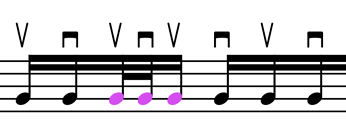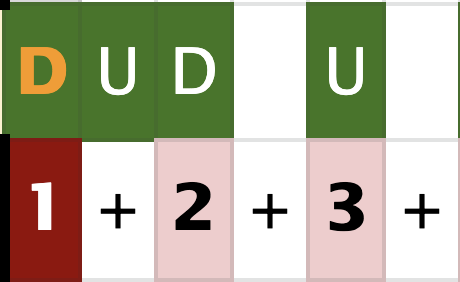Just want to restate, especially re a deleted comment I saw from you: I really, truly, mean and meant no offense or aggravation in my comments here. I do not have a lot of investment in this discussion, so I was being lighthearted, but I can definitely see how my tone could be interpreted as insulting, and I apologize for that. I think I was assuming there would be similarly low/no investment from others, as the subject of this discussion is so trivial. I know I make jokes, and they’re 99% of the time hilarious and win me many gold medals and tons of new friends, and I think it’s likely you interpreted me digging in to you specifically much more than I meant to.
Since I teach for a living, I try to be careful about what I teach and how I draw my conclusions about music and guitar playing, so that’s why I am passionate about the ‘absolutes’ issue, because I do feel like in the musical world there’s so much advice given that doesn’t have a lot of substance behind it - maybe experience, maybe mind-blowing world class playing, but not necessarily evidence or proof that X is better than Y, yadda, the whole, correlation/causation thing, appeal to authority, yadda, yadda. That’s what drew me to Troy/CTC, is because I believe he tries very hard to be evidence based. So again, apologies for maybe being overly optimisitic that the digs would be taken in the light hearted way I meant them.
Cool?
ANYWAY, actual music stuff:
Thanks for the more detailed reply. I understand your preference for the ‘pure alternate’ version because of the mechanical inefficiencies of doing multiple downstrokes as the tempo increases. Yes, in A, you never have to ‘double back’ to restart a downstroke, and instead just go back and forth through the string.
So the pure alternation issue definitely checks off “produces less tension” and “higher speed cap” but I think the reason one would ever for a split second even entertain the thought of possibly considering thinking about being open to someday trying to experiment with something that is not pure alternate, is for time-keeping reasons, eg 'fewer obstacles towards producing the correct rhythm."
I’m going to say a few things just to set up a point, so bear with me and keep in mind I’m not arguing about whether A is best per se, but more so the criteria we evaluate to draw that conclusion.
Regarding time keeping, I think a lot of people, myself included, have difficulty doing this and keeping strong time:

Is there something innately difficult about keeping time for that? I don’t think so, but it’s probably just a lot less familiar for a lot of people. I think for typical chugging types of riffs (and I’ll admit, I’m speaking out of my genre-comforts at this point, but it’s not stuff that’s totally foreign to me) at slower tempos we’ll see a lot of downstroke on the ‘main’ note value (in this case 16ths), upstrokes just for the upbeats that occur between those note values (in this case, 32nd note upbeats.)
At a slower tempo, say 70bpm or so (or 8ths/16ths at 140) doing it this way is fine and I don’t think many people would have a problem with it.
At 70 bpm I feel reasonably confident that, based on my experience out ‘in the wild’ most people would have an easier time keeping the rhythm very tight and accurate doing option C than in option A.
Obviously, as tempo increases we run into the problem you outlined, and then there’s the question of: if someone is having difficultly with both the time keeping components of ‘A’, and the tempo of any picking approach, would it be easier to compromise mechanical efficiency by having a few ‘doubled’ down strokes, potentially causing fewer rhythmic hurdles, or would it be easier to get accustomed to the slightly out of the ordinary rhythmic orientation of the strokes of ‘A’ and have fewer hurdles in the mechanical efficiency department? I’m inclined to agree with you that at 116bpm, it will probably be easier to get used to the different rhythmic orientation than to map out some sort of "double-down"ing
However, I can see exceptions in cases where:
- a guitarist who has a lot of experience playing all-downstroke types of chugging riffs, so the upstroke-on-downbeat feeling is super disorienting and not worth the trade off in efficiency
- similarly, someone who struggles more so with rhythm and time keeping (either internally, on their instrument, or both) than pure speed.
Also, the comparison, and the question, is extremely tempo relative. I am 100% on board with the fact it takes more energy to go ‘down, down’ on one string than either ‘down, up’ or ‘up, down’ but I also have seen that in many cases time keeping is much easier when we are coordinating a downstroke with downbeats (I guess in this case that’s 32nd note downbeats.) Below a certain tempo threshold, the mechanical efficiency isn’t a big factor.
And for me, this is where my genre-unfamiliarity plays a bigger role: I’m not familiar with common tempos for all-downstroke chugging. So I don’t have data on whether all-down 16ths at 115 is like, total madness vs. kind of quick vs. pretty commonplace.
And really I think that’s a lot of what it comes down to. It’s possible you have a lot of information and experience on these two data points:
- how common it is to be able to comfortable down-pick consecutive 16ths at ~ 115bpm
- how common it is to be able to comfortably execute this type figure, with these strokes, with rhythmic precision:

And therefore it may seem obvious to you that it is much easier to get used to that rhythm/stroke combo than it is to get up to 115bpm with the occasion double-down 16th.
Since I don’t have that data, and I haven’t spent much time trying to perform that figure with those strokes, I wouldn’t know, and to me we’re still in the world of the theoretical. Spending a little time playing the different approaches so far, I can see pros and cons of each one, but before even posting was definitely considering ‘A’ the best choice for myself.












